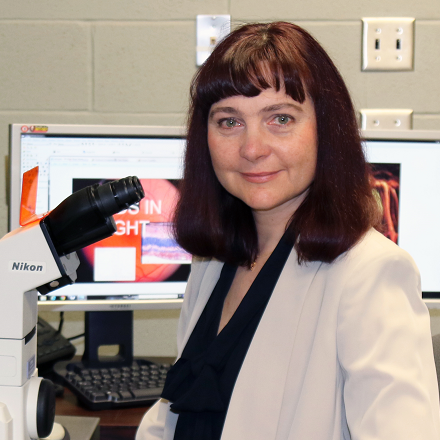Article
Could ELOVL4 Expression be a Key to Preventing Diabetic Retinopathy?
Author(s):
Diabetes causes ELOVL4 to be downregulated, weakening the tight junctions. Researchers hope that replacing these lipids could be a treatment for diabetic retinopathy.

Julia Busik, PhD
The normalization of retinal ELOVL4 expression could possibly be utilized to prevent the dysregulation of the blood-retinal barrier experienced in diabetic retinopathy, according to new findings.
The researchers were surprised to discover that a type of fat, once thought to only exist in the skin, may also exist in the eyes and help protect against this condition. If they can decipher how to replace it, they may be able to develop a new treatment that could slow or halt the progression of the damage.
“We were looking for a wrong lipid in the wrong place,” Julia Busik, PhD, a professor of physiology at Michigan State University, and lead author of the study, told MD Magazine. “It took a lot of searching and some luck to figure out what is going on.”
Excess glucose in the bloodstream of a diabetic patient gets into the blood vessels and wreaks havoc, which results in diabetic retinopathy. The vessels can swell, leak, or close off—the eye can even grow extra blood vessels. Treatments usually revolve around controlling a patient’s blood sugar, and if that does not work, they may require surgery.
One of Busik’s previous studies showed that lipid metabolism was even more active in the retina than it is in the liver and that one particular enzyme which helps build elongated lipids was expressed more than others: ELOVL4. A mutation in ELOVL4 was previously shown to be associated with certain types of macular degeneration, and Busik lab found that downregulation of ELOVL4 was associated with diabetic retinopathy, but they didn’t know why.
In this study, they set out to find out what ELOVL4 does within the retina. As it turns out, it helps synthesize the fatty acids that were previously thought only to live in the skin.
“ELOVL4 was shown to produce very long chain polyunsaturated fatty acids [VLC-PUFA] in the photoreceptor cells. We were expecting that diabetes-induced changes will be mainly manifesting as a decrease in VLC-PUFA,” she said. “Instead, we found VLC saturated fatty acids that incorporate into 3-omega-hydroxyceramides. These very unusual lipids have only been found in the skin where they provide water permeability barrier. We really did not expect to see them in the eye.”
But the eyes have their own barriers. Tight junctions connect blood vessels in the retina and form a wall which separates the retina from the rest of the body, and this is where the team found the VLCs.
When a patient has diabetes, the enzyme that produces these fatty acids—ELOVL4—is downregulated, and fewer are produced, weakening the tight junctions. This leaves the blood vessels in the retina vulnerable to damage from excess glucose circulating in the body.
Busik hopes that replacing these lipids may be a novel treatment for patients with diabetic retinopathy. “Importantly, we are looking into potential treatment options, such as activation of Elovl4 or direct delivery of VLC 3-omega-hydroxyceramides to retinal vasculature to treat vascular damage in diabetic retina,” she said.
The study, “ELOVL4-Mediated Production of Very Long-Chain Ceramides Stabilizes Tight Junctions and Prevents Diabetes-Induced Retinal Vascular Permeability,” was published in Diabetes.





